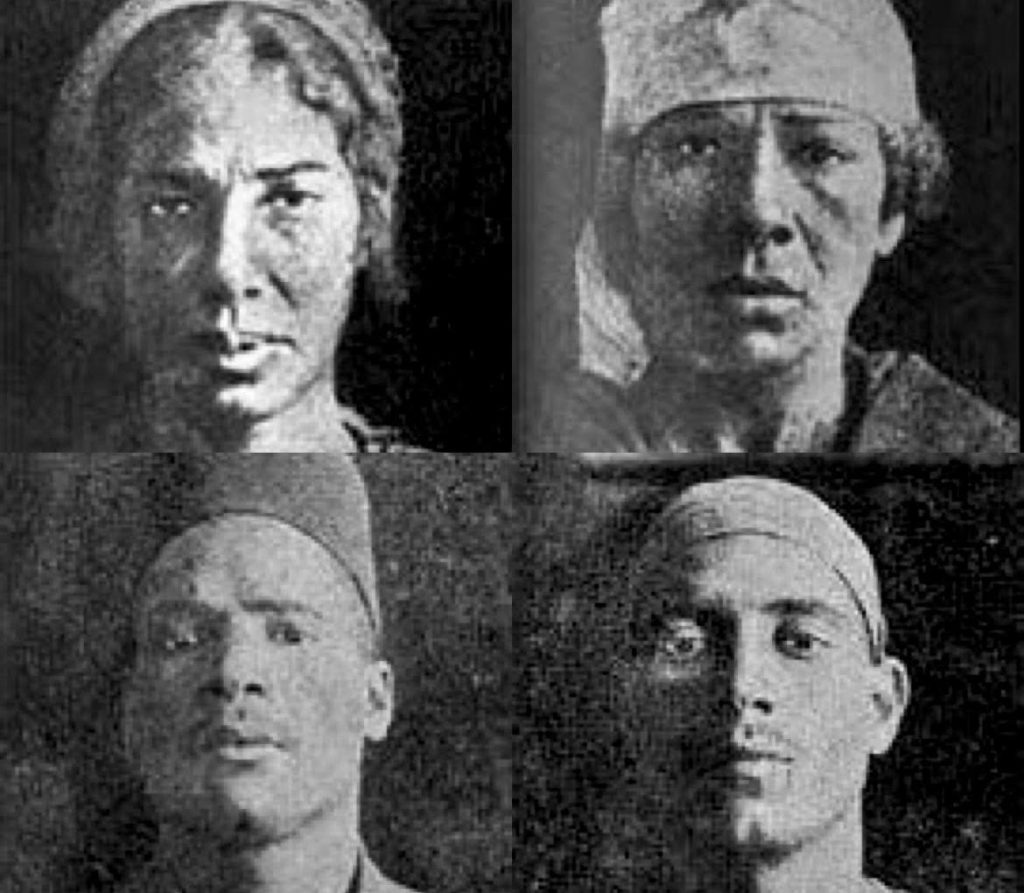When it comes to the lives of notorious criminals Raya and Sakina, for decades the media has always scrutinized the victims’ personal lives and horrific crimes. Leaving the contributions of their husbands, and the two other men involved in the crimes neglected. The gang, which included sisters Raya and Sakina Bint Hammam, their husbands Hasaballah Saeed Maraei and Mohammed Abdel Aal, as well as local enforcers Orabi Hassan and Abdel Razeq Youssef, were arrested in Alexandria in early 1921 on suspicion of murder, following the disappearance of several women in the Labban neighborhood.
After a lengthy investigation, all six members of the gang were found guilty and sentenced to death. In December of the same year, they were executed. The gang was believed to be responsible for the robbery and murder of 17 women, most of whom worked in unlicensed brothels and hash dens that the sisters managed in Labban and nearby areas. Shockingly, investigators discovered the bodies of their victims buried beneath Rayya and Sakina’s house.
The murderers and victims, in this case, were from marginalized communities, often overlooked and powerless against the cruelty of societal pressures. Although two of the killers were women, and all of the victims were female, the role of the four men who carried out the murders is not well-understood. These men were portrayed as being manipulated by their wives and deemed as failures for their inability to control them.
Rayya and Sakina, along with their husbands, moved from Upper Egypt to Alexandria in the hopes of improving their lives. According to Takla, the Egyptian economy’s crash caused by World War I led to the rise of the informal economy during the 19th and 20th centuries.
This allowed the less privileged members of Egyptian society to make a living by taking up unconventional jobs. According to the book, “Regal Raya w Sakina”, by Salah Issa, the economic crash that led to their husbands losing their cotton industry jobs also spurred Raya and Sakina into running a brothel business that catered to a diverse clientele. Each member of the two couples had their own role to play in managing the brothel and recruiting both sex workers and customers. As their financial situation continued to deteriorate, they increasingly relied on the income generated by their illicit work.
Their first brothel, situated near the British army base, quickly became a hot spot for British soldiers, local businessmen, and married men seeking pleasure. Over time, both couples, Hasaballah and Raya, and Abdel’al and Sakina, expanded their business by opening brothels in different parts of Alexandria to cope with the growing demand. However, given that prostitution was illegal, the sisters strongly denied providing such services. Despite their success, the sisters’ venture was always at risk of being exposed. The illegal nature of their business left them vulnerable to threats from both competitors and law enforcement alike.
As the aftermath of World War I and the 1919 revolution took its toll on the Egyptian economy, Rayya and Sakina’s brothel business continued to thrive. However, with their newfound wealth came a dangerous shift in their behavior, one that would lead to an increase in their murderous tendencies. Their strategy followed a disturbingly consistent pattern: Rayya and Sakina would lure wealthy women from the market into their home in the Labban neighborhood, plying them with alcohol until they became incapacitated. Then, their husbands – Hasaballah and Abdel A’al – would strangle the victims, steal their jewelry, and bury their bodies beneath the house.

The sisters’ crimes were heinous and their greed knew no bounds. With each murder, their thirst for wealth and power grew stronger, leading them down a path of no return. The question remained: how long could they continue to evade justice? In Egypt at that time, wealthy women preferred to safeguard their wealth in the form of gold jewelry rather than in banks, making them easy targets for the gang. The gang members would set their sights on the flamboyant and eye-catching jewelry, which would eventually lead to the victims’ tragic fate.
The media coverage focused on the fact that the perpetrators were women, linking their misdeeds to ‘public immorality’ in society. This cast the women and their crimes through a specific lens, as their gender was used to sensationalize the case. Newspaper reports on Raya and Sakina delved into the victims’ profiles, sexual activity, and the women’s personal lives while neglecting the contributions of Hasaballah, Abdel A’al, and the two other men involved in the crimes. The focus on the women’s actions rather than the entire gang’s criminal behavior perpetuated harmful stereotypes and reinforced societal biases. The story of the Egyptian serial-killing gang is a chilling reminder of the corruption that human beings are capable of. It is also a testament to the tireless efforts of law enforcement officials who worked tirelessly to bring these criminals to justice.
WE SAID THIS: Don’t Miss…Alexandrian Famed Killers ‘Raya And Sakina’ Are Getting A Brand New Series



